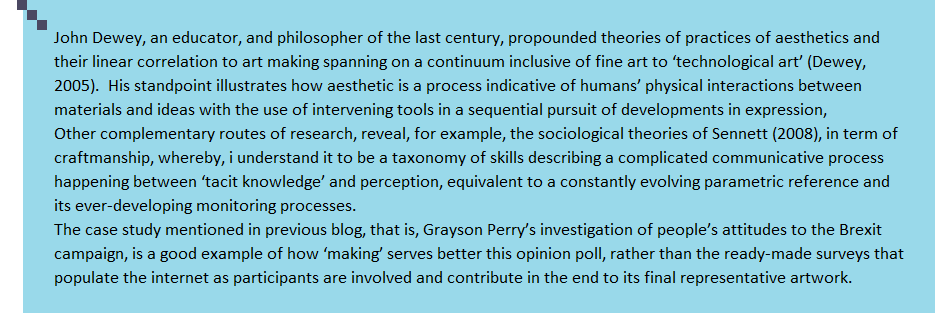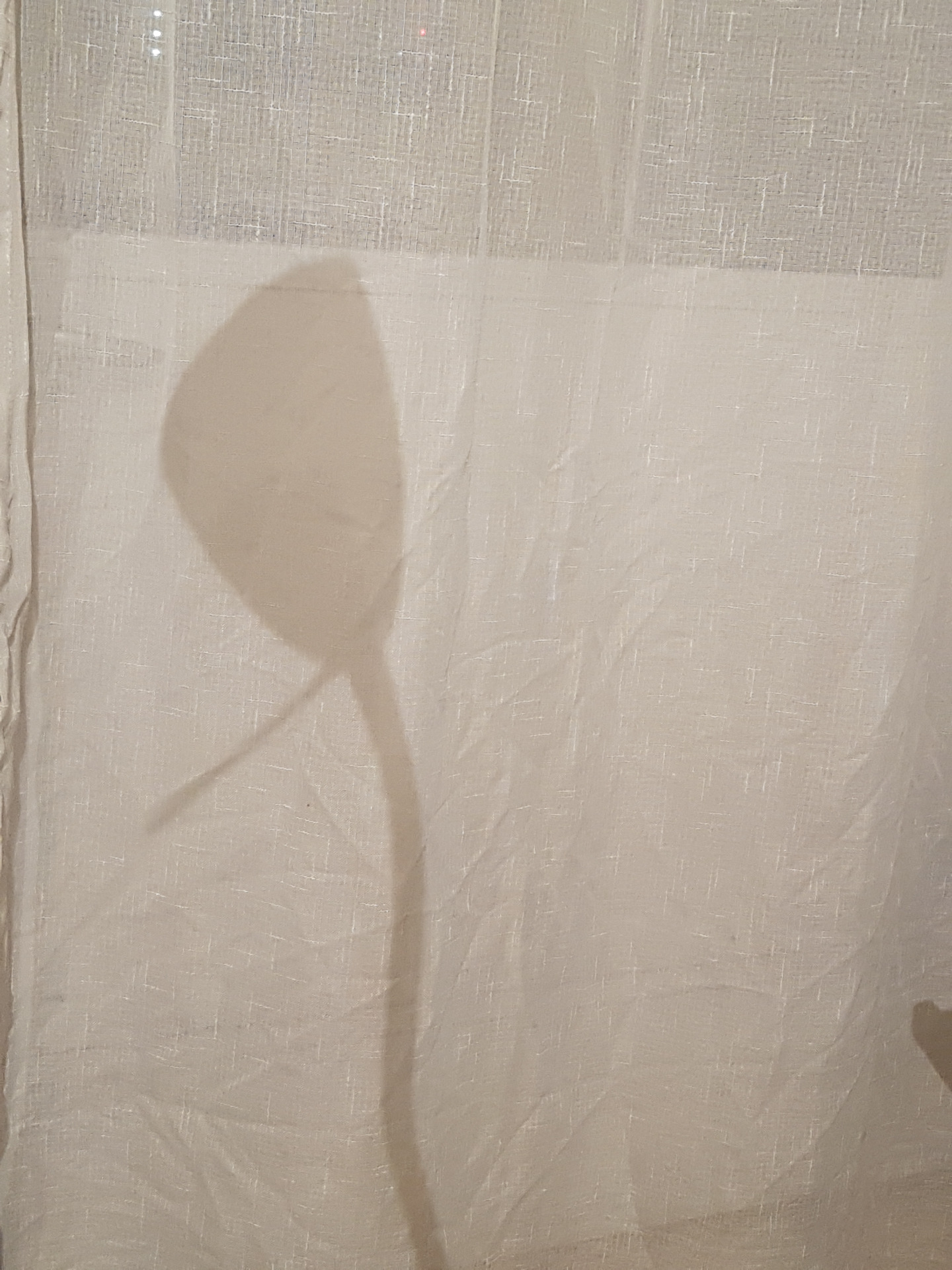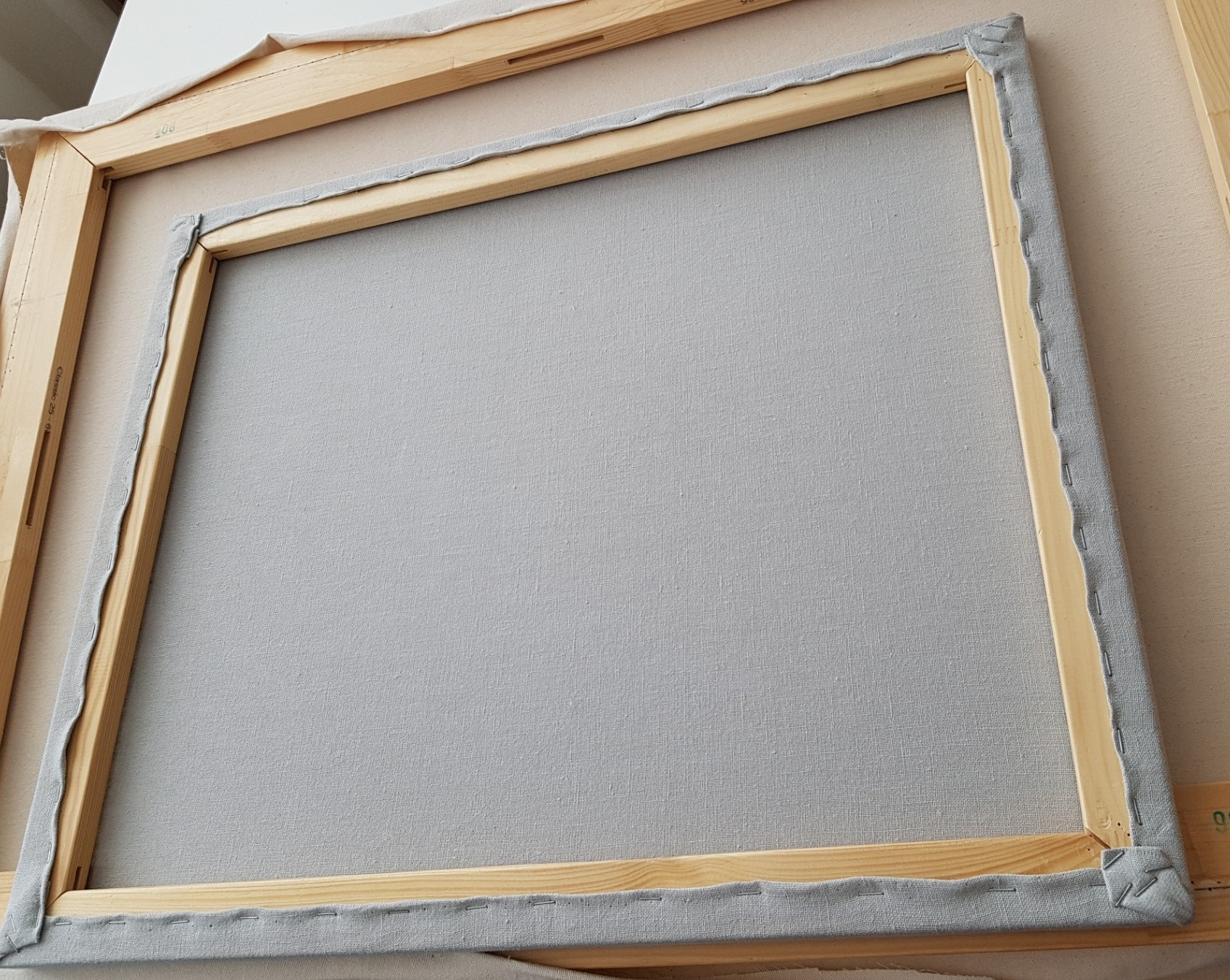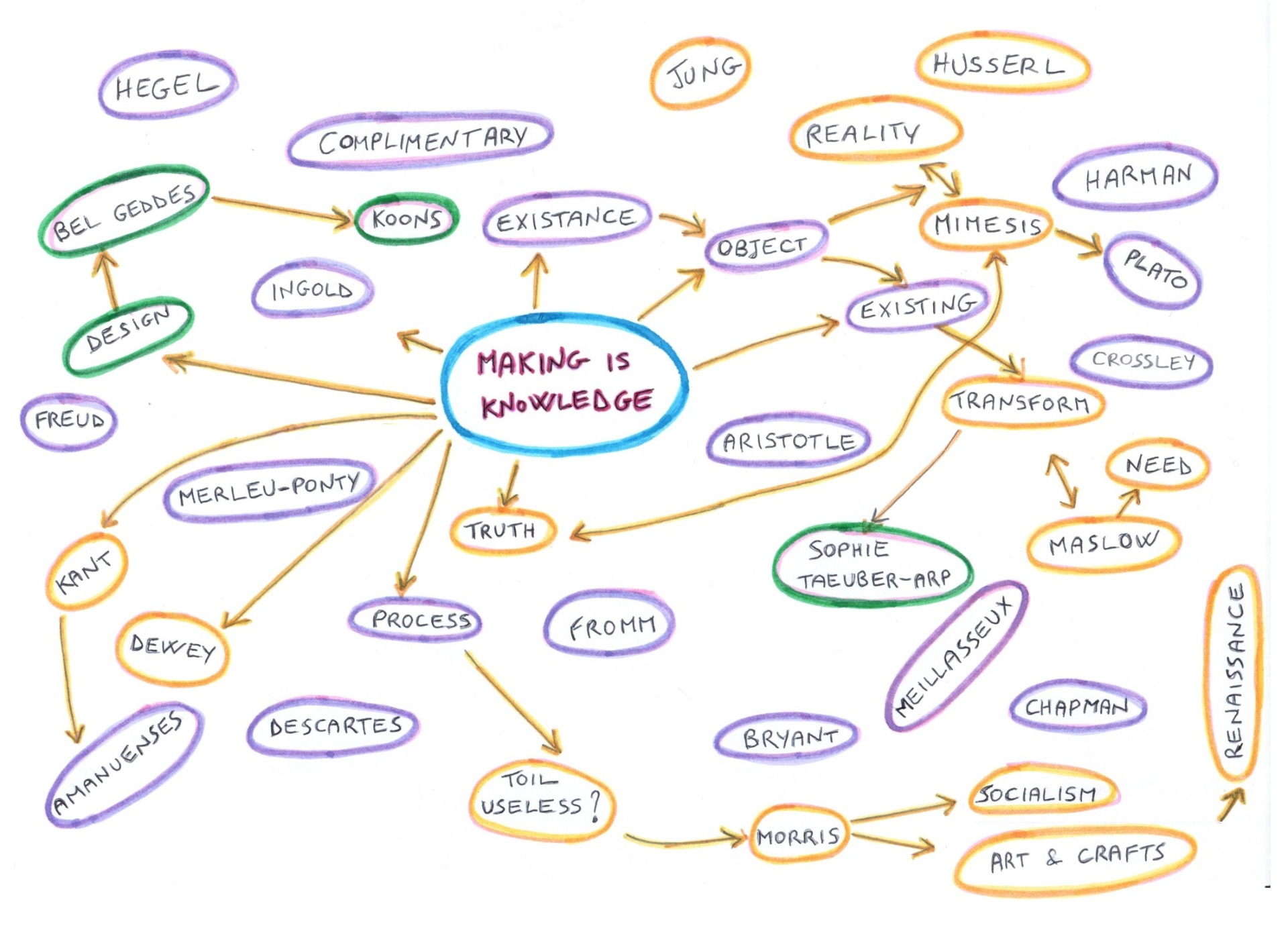Research
Art Making
Martella, P. (2020-2021) Tracciati Series
'Our epoch has invented machines which would have appeared wild dreams to the men of past ages, and of those machines we have as yet made no use. They are called 'labour-saving' machines - a commonly used phrase which implies what we expect of them; but we do not get what we expect. What they really do is to reduce the skilled labourer to the ranks of the unskilled, to increase the number of the 'reserve army of labour'-that is, to increase the precariousness of life among the workers and to intensify the labour of those who serve the machines (as slaves their masters).' (Morris, 2013, p. 117).

Reference List and Bibliography
- Dewey, J. (2005) Art As Experience. [N.p.]:
TarcherPerigee. Available at:
https://0-search.ebscohost.com.emu.londonmet.ac.uk/login.aspx?direct=true&db=nlebk&AN=1595036&site=ehost-live
(Accessed: 7 November 2020).
- Morris, W. and Morris, M. (2013) 'Useful Work versus Useless Toil [1884],' in The Collected Works of William Morris: With Introductions by his Daughter May Morris. Cambridge: Cambridge University Press (Cambridge Library Collection - Literary Studies), pp. 98-120. Available at: https://0-www-cambridge-org.emu.londonmet.ac.uk/core/books/collected-works-of-william-Morris/useful-work-versus-useless-toil-1884/A014589775EFADE985C068561A2BE30A (Accessed: 20 October 2020).
- Sennett,
R. (2008) The Craftsman. New Haven [Conn]: Yale University Press. Available at:
https://0-web.a.ebscohost.com.emu.londonmet.ac.uk/ehost/ebookviewer/ebook/bmxlYmtfXzI3ODY0NF9fQU41?sid=1e469322-7f15-4c13-9076-72a180f0ec43%40sdc-v-sessmgr02&vid=0&format=EB&lpid=lp_vii&rid=0
(Accessed: 26 November 2020).




